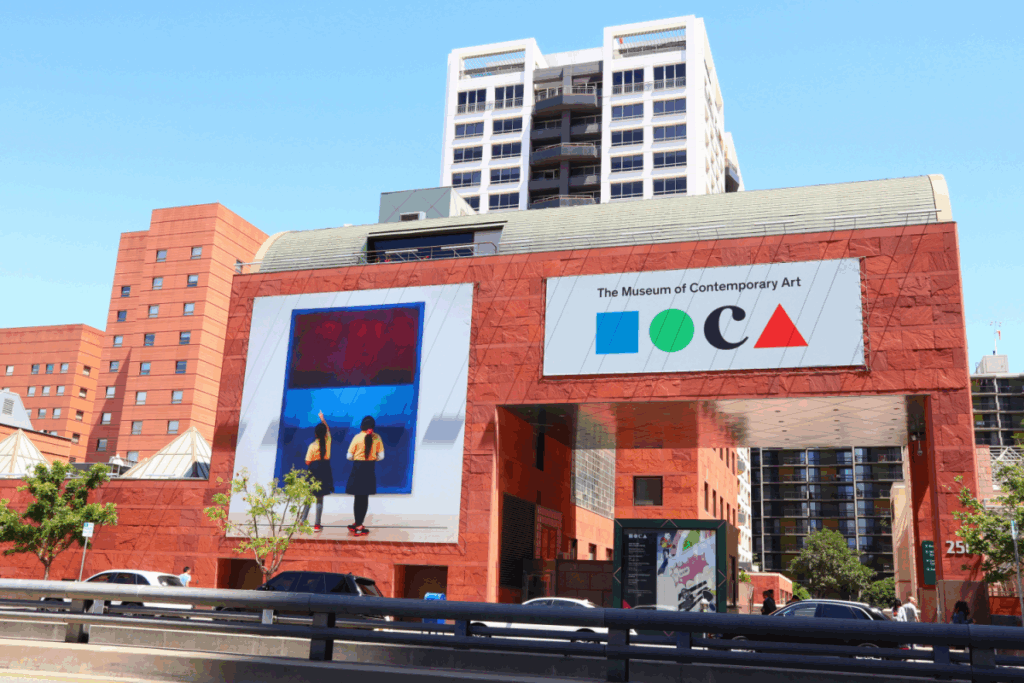Massive Sculptures, Complex Logistics, and a Powerful Dialogue on Race
The Museum of Contemporary Art (MOCA) in Los Angeles has unveiled one of its most ambitious and provocative exhibitions to date. Titled Monuments, the show reexamines America’s legacy of racial oppression by placing decommissioned Confederate statues in direct conversation with contemporary artworks that challenge the symbols of white supremacy.
Opening this week at MOCA’s Geffen Contemporary and at The Brick, the exhibition is both logistically and emotionally weighty. The sculptures at its core—some standing over 16 feet tall and weighing as much as 15,000 pounds—were never designed to move. Once towering over parks and public squares in Maryland and Virginia, these bronze and granite figures now inhabit a museum space where their meaning is radically transformed.
Moving History Itself
Transporting and installing the works proved an enormous feat. The curatorial team—Hamza Walker of The Brick, Bennett Simpson of MOCA, and artist Kara Walker—oversaw a months-long logistical effort involving road closures, reinforced flooring, and heavy machinery.
One of the most challenging pieces was Laura Gardin Fraser’s Lee-Jackson Monument (1948), on loan from the city of Baltimore. The massive double equestrian sculpture of Confederate generals Robert E. Lee and Stonewall Jackson required two Versa-lifts and a team of engineers to position it safely inside the Geffen space.
“These things were never made to be moved,” said Walker. “It’s not like contemporary art where you think about how big the doors need to be.”
MOCA’s Geffen Contemporary—once a police car warehouse—was uniquely suited for such monumental works, with ceilings reaching 35 feet. But at The Brick, where ceilings are only 14 feet high, Kara Walker’s own contribution, Unmanned Drone (2023), nearly brushes the top. The piece dramatically reconfigures a statue of General Jackson on horseback, decapitating both rider and horse, while three granite slabs from its original base—each weighing up to 12,000 pounds—sit nearby like silent witnesses to dismantled power.
Contemporary Voices Reshape the Narrative
The exhibition juxtaposes historical artifacts with modern reinterpretations. Hank Willis Thomas’s A Suspension of Hostilities (2019) flips the image of the “General Lee” car from The Dukes of Hazzard—literally turning it upside down. The orange Dodge Charger, built by a Hollywood prop studio, critiques nostalgic depictions of the Confederacy while symbolically inverting the myths of American heroism.
Meanwhile, Karon Davis’s Descendant (2025) presents a striking counterimage: a monumental sculpture of her son casually holding a tiny Confederate figure by the tail, as if it were a powerless relic. “It flips the script that monumentalizes white bodies,” Davis said of her work.
The curators see these juxtapositions as essential. “We’re creating a dialogue across time,” said Simpson. “These objects once glorified oppression. Now they become part of a different kind of reckoning—one that confronts what they meant, what they caused, and what they can teach.”
A Singular, Site-Bound Project
For MOCA, mounting Monuments was an operation on par with engineering a building. Ann Goldstein, the museum’s interim director, compared it to when the Geffen had to open its walls in 1998 to install Richard Serra’s massive steel sculptures.
But unlike many blockbuster exhibitions, Monuments will not tour. “No, it’s here, it’s the only place it could be,” Goldstein confirmed. The decision underscores the show’s physical and conceptual immovability: these works, once fixed symbols of domination, are now part of a fixed act of reinterpretation.
By housing these toppled monuments in an art museum, the exhibition transforms their meanings—from glorifying conquest to exposing its cost. As Hamza Walker noted, “We’re not just moving statues. We’re moving history itself.”


